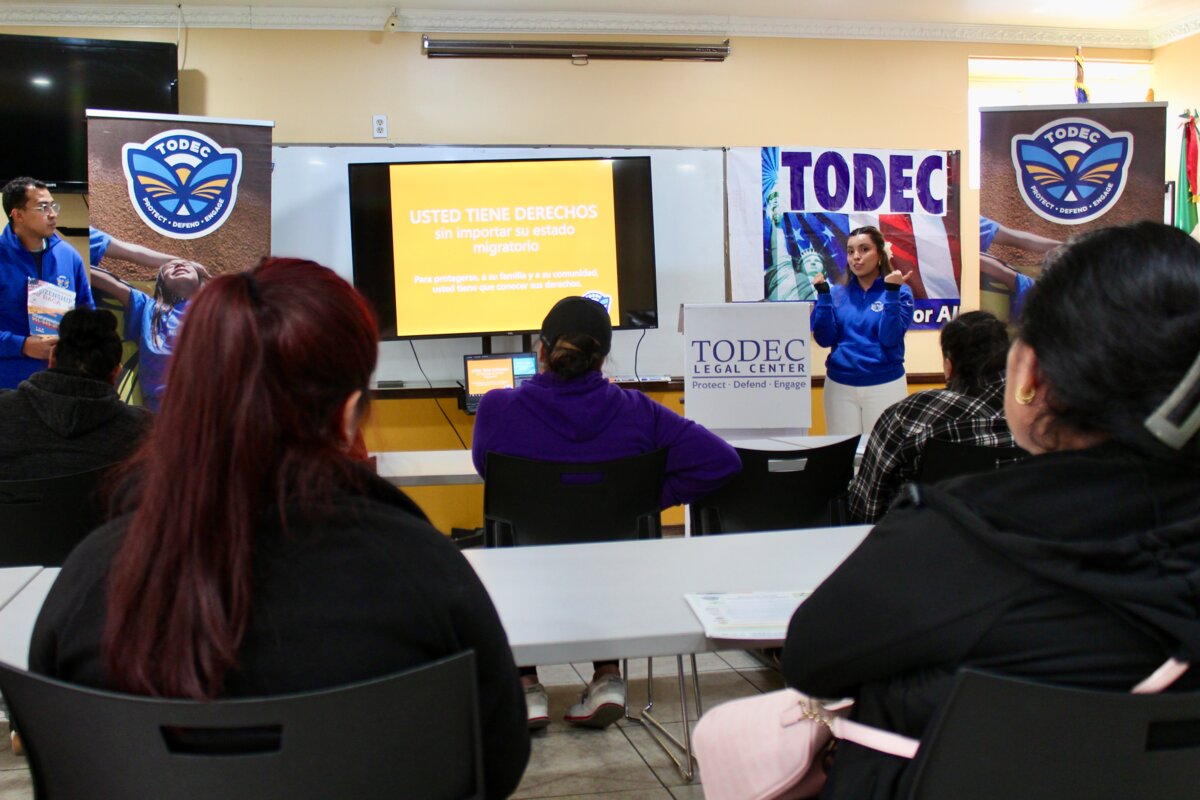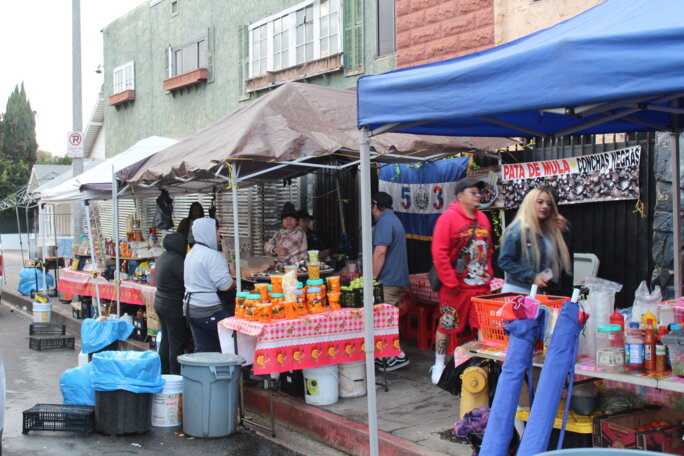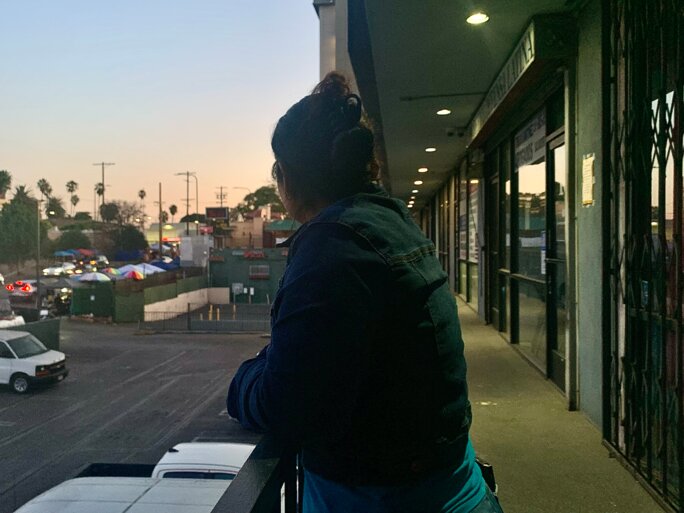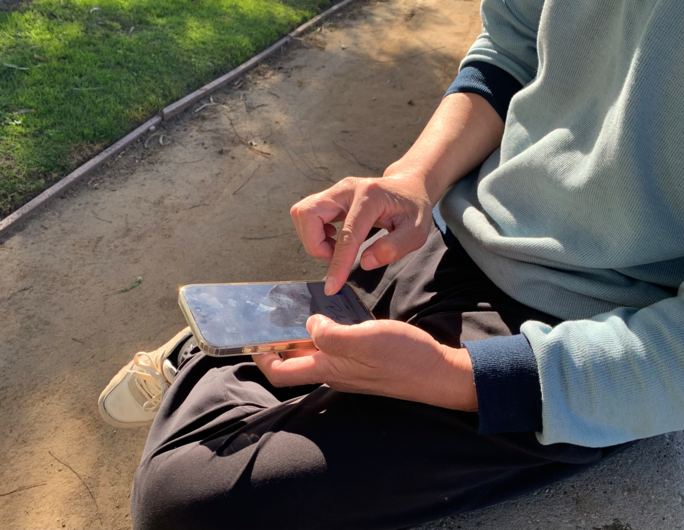It was late morning and people were filling in forms at a stand set up on the pavement outside the offices of the TODEC Legal Center in the Californian town of Perris. That January morning, the legal aid NGO was giving a presentation about civil rights to an audience of 15 people, ten of them women, and all of them immigrants from Latin America.
“You have rights, no matter what your situation,” insisted Sandra, a volunteer adviser with the NGO. “We’re in a democratic country.”*
Since the re-election of Donald Trump as US president on November 5th, immigrants living in and around Perris, worried about what the future now holds for them, have been flocking to TODEC’s offices. “With Trump coming to power we’ve had to increase these workshops to meet the demand,” explained Luis, another volunteer with TODEC.
Since December, 280 workshops have been held, at TODEC’s offices, at schools or on farms where many of the undocumented work. “The community is very worried,” said Luis. “We’re here to support them and give them a maximum amount of information.”
Most of those present are undocumented, and their paths to obtaining legal status can be tortuous. But, they are warned by TODEC, they must be careful to avoid making mistakes that can complicate their applications. One major question is what to do if they are questioned or detained by the police. They are told that the first step is to understand the difference between the Immigration and Customs Enforcement agency, ICE, and its sister unit, the Border Patrol.
The uniforms, vehicles and insignia are flashed up on a video screen. “If they come to your home, don’t open the door,” they are told, “and keep quiet because anything you might say can be used against you.”

Enlargement : Illustration 1

“To arrest you at your workplace, the officers must have a judicial order and the agreement of your employer,” the volunteers explain. “In all cases, show your Red Card.” The “Red Card” is a leaflet that contains advice on what to say and do, and a detail of constitutional rights, in situations where an immigrant is arrested, or if their home or workplace is raided. The cards are printed in English and Spanish.
Before the workshop finished in the early afternoon, TODEC’s director Luz Gallegos underlined that parents must prepare their children for the worst and advise them on what to do if officers approach them. “Experience has shown us that the border police could question them using intimidation,” she said. “Teach them to not open the door and to stay silent.”
Preparing for deportation
As the attendees left the room, some of them heading for a session with the legal team to talk about their own particular situation, Marta (not her real name) agreed to talk to Mediapart. Her fear was apparent. “We don’t have [the required legal] papers, so I’m worried about the future,” the 46-year-old said. From Mexico and married with three children, Marta works in the greenhouses of a local farm, and has lived in insecure conditions in the US for about 20 years.
She recounted that the previous week, border police had been checking vehicles close to where she works. “They’re able to see whether we have papers or not with the vehicle’s registration number,” she said, adding that she and her colleagues panicked at their presence. In the greenhouses where Marta works from 5am to midday, all of the 23-strong workforce are undocumented.
Her daughter benefits from the scheme of Deferred Action for Childhood Arrivals, DACA, which defers deportation of those who arrived in the US illegally when minors and who are students when applying for the status. Marta’s other two children are enrolled at school. She said one of them is so anxious about the future for him and his family that he is in therapy. “We are in permanent insecurity,” she added. If Trump follows through with his pledges on immigration, Marta said, “it will be a catastrophe”.
She has already taken precautions in case she is deported. Her sister, who has legal status, would look after the children, a scenario that she nevertheless envisages with angst.

Enlargement : Illustration 2

About 115 kilometres north-west of Perris is Los Angeles, California’s largest city by population, where Mediapart caught up with Jose (not his real name) as he sipped on a beer and put the world to rights with fellow Salvadorian friends. Jose explained he came to the US at the age of 17, and that he is the second eldest of a family of ten children. He described his life as “difficult”, whether finding somewhere to live or finding the money to pay the rent. He explained that he had worked a long time in the textile trade, before becoming an electrician when he did jobs for what he called the “Hollywood” wealthy.
“Immigrants make up the very fabric of Los Angeles and they deserve to feel safe and protected in the city they call home, no matter who is in power
One of those present, Martin, 44, declared that if he was brought before a judge for deportation “I’d reply that ‘I don’t sell drugs, I’ve never committed a crime’”. A young Salvadorian teased Martin, telling him Trump “will send the police after you”. For the group, Los Angeles is a city of Salvadorians, Mexicans and Guatemalans, where, boasted Martin, “Latino power” reigns. But José tempered that everyone in the neighbourhood was “stressed out” with the return of Trump. “They say California will protect immigrants, but I don’t believe that. If Trump wants to get rid of everyone, he’ll do it.”
More than ten million of California’s population of 39 million are immigrants. Just days after Trump’s election, the state’s Democrat leaders declared their future resistance to the incoming president’s policy pledges. On November 7th, Governor Gavin Newsom, an outspoken Trump adversary, called for a special session of the state's legislature to ensure the safeguarding of its progressive laws. “The freedoms we hold dear in California are under attack — and we won’t sit idle,” Newsom said in a statement.
Also in November, the Los Angeles City Council unanimously adopted a motion which pledged that none of the city’s resources, neither property nor personnel, can be used for any enforcement of the anti-immigrant decisions of the Trump administration. The council said it was making Los Angeles – where it estimates 1.35 million immigrants live, representing 34% of the population – a “Sanctuary City”.
According to the New York-based NGO Vera Institute of Justice, 2.2 million foreign-born “non-citizens” living in the Los Angeles metro area “are potentially at risk of deportation” .
“Immigrants make up the very fabric of Los Angeles and they deserve to feel safe and protected in the city they call home, no matter who is in power,” said Los Angeles City Council member Nithya Raman, who proposed the “Sanctuary City” motion. She said the council rejected all hate speech and “destructive” policies that separate families or minimise their role in society.
During the week beginning January 6th, Border Patrol officers conducted a roundup of immigrants in the area surrounding the town of Bakersfield, about 180 kilometres north-west of Los Angeles, when they pulled over cars on the basis of racial profiling of Latinos and raids on employment centres. According to the United Farm Workers union, around 200 people may have been detained in the first few days of the operation, and up to 1,000 people detained and released.

Enlargement : Illustration 3

Sandra, a 28-year-old Salvadorian, lives in the “El Salvador Corridor” neighbourhood in Los Angeles. She takes each day as it comes, she says, being as discrete as possible, and worrying about being discovered by ICE agents, who she said were recently present in the area.
She previously worked in the city as a street vendor, selling the Salvadorian dough cake called pupusa, one of many who set up their pavement stalls during the day in the less wealthy parts of the city with specialities from their country of origin. For the last six months she has been working, undeclared, in a restaurant whose owner got to know her when she managed her stall close by.
Sandra recounted how she had been abused mentally and physically by her former husband and his cousin, with whom the couple once lived. “I was sometimes prevented from going out,” she said. “I couldn’t dress as I wanted, they insulted me.” She apologised for crying as she recalled the domestic violence. She now lives in the storage depot of the restaurant, whose owner has given her free lodgings in a room within the building.
She said that she came to the US to seek a better life and to be able to help pay for her ill mother to receive medical treatment. In El Salvador, she explained, “everything is expensive” and work does not allow to make ends meet. She said her former husband paid 15,000 dollars for her to reach Mexico and cross the Sonora desert to reach the US border, which she crossed in June 2023, and that she still has to repay a part of that sum.
“I knew it would be difficult, but not as much,” said Sandra. “I didn’t think Trump would be re-elected. And I don’t understand why they want to expel us massively.”
“I left China because of Xi Jinping and the lack of freedom, but I realise that it’s no better here.”
Sandra’s opinion is shared by Xi, from China, who works as a driver at a vehicle-for-hire firm in Los Angeles. “America needs immigrant workers,” he commented. “Trumps plans are contradictory.”
At the age of 53, Xi left his wife and his home in the port city of Dalian, in north-east China, travelling to the US via Hong Kong, Turkey, Ecuador, Colombia, Panama and Mexico. He arrived in January 2024 and began his new life in the US working in a friend’s restaurant.
“I left China because of [Chinese president] Xi Jinping and the lack of freedom, but I realise that it’s no better here.” He said he now saw no “heaven”, and appeared close to regretting his decision to migrate.
With the impending arrival of Trump as president, Xi decided to consult a lawyer (in the US, a lawyer can charge more than 10,000 dollars for regularising an immigrant’s legal status). “He advised me to request asylum before Trump’s inauguration,” recounted Xi. “But I know they want to put requests on hold, above all for those who enter the territory illegally, like me.”

Enlargement : Illustration 4

Eiad, a Syrian refugee who arrived in the US in 2016 – “just before Trump was elected for the first time” – has at last been given an appointment, in March, for an interview for his asylum application. Mediapart met with him at a café in the town of Irvine, about 60 kilometres south of Los Angeles.
He had successfully applied for a study course and obtained Temporary Protected Status (TPS), on the basis of the chaos in war-torn Syria, and which he must renew every 18 months. “I subsequently consulted a lawyer who pointed me towards requesting asylum, for more permanent protection,” he recalled.
But now, after finishing his studies and securing a stable job in the computer software sector, he fears for his future. “The evolution of the situation in Syria could lead to my TPS being withdrawn, whereas everything is uncertain over there. A number of other exiled Syrian are worried like me.” Eiad can no longer justify requesting asylum on the basis of his opposition to the Syrian dictator Bashar Al-Assad, who was deposed in early December, but can cite his fears over religious issues under the new regime.
However, Eiad believes Trump’s return to the White House could change everything. “It’s now five years that I’ve waited to have my interview,” he said. “I at last have a date, in March, but Trump has threatened on many occasions to suspend asylum requests and to no longer grant protections.”
The Syrian underlined that it takes an average of four years for an asylum seeker to be given an interview. “That’s a long time. People have time to settle down, find a good job, have children. It makes no sense to put all that into question.”
Eiad’s sister lives in Belgium, where she was granted asylum after just one year, and since Trump’s re-election she has been trying to convince Eiad to join her there. He said all of his family are worried for him. His parents have remained in Syria, while his brother moved to Australia and his other sister settled in Saudi Arabia.
“I have thoughts of leaving if things get complicated for me,” he admitted. “But that would be difficult. I have my roots here now.”
-------------------------
- The original French version of this report can be found here.


